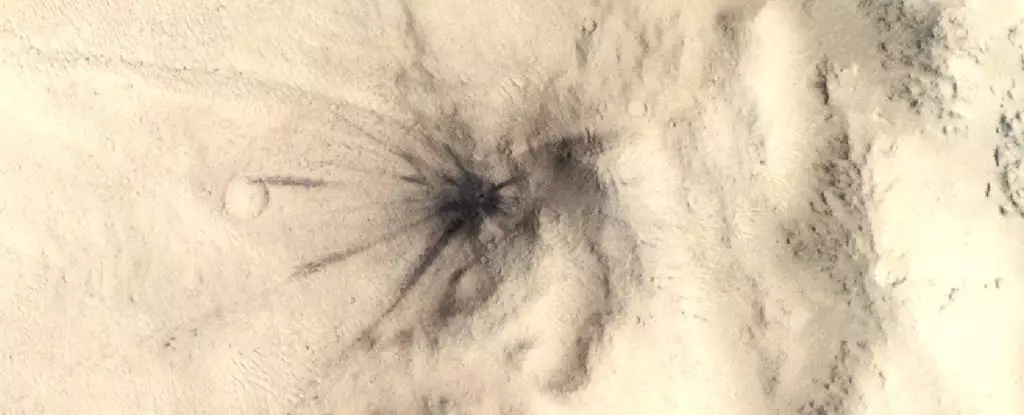Mars, the fourth planet from the Sun, has long intrigued scientists and enthusiasts alike. With its rusty red surface and dust-laden atmosphere, it has captivated imaginations about the possibility of life and the geology of alien worlds. A recent study, leveraging artificial intelligence to analyze seismic activity on Mars, has unveiled a treasure trove of insights that challenge long-held assumptions about the planet’s geological dynamics and its underlying processes.
The Surprising Source of Marsquakes
Contrary to previous beliefs that marsquakes were primarily the result of tectonic movements or internal geological activity, recent findings indicate a different narrative. Planetary scientist Valentin Bickel from the University of Bern emphasizes that a considerable number of these seismic events are sparked by meteoroid impacts rather than tectonic activity. This revelation not only deepens our understanding of the seismic landscape of Mars but also reshapes our models for how rocky planets, akin to Earth and Venus, evolve.
The study highlights an astonishing truth: Mars experiences fel-.. multiple meteoroid impacts more frequently than previously recognized. Using machine learning algorithms, researchers meticulously scrutinized seismic data from the InSight lander, which operated from 2018 to 2022, detecting over 1,300 distinct quakes. By cross-referencing these seismic events with images from the Mars Reconnaissance Orbiter (MRO), the scientists identified 123 new impact craters and successfully connected 49 seismic events to specific impacts.
These findings compel a reevaluation of Mars’ geological activity and its history. For years, scientists perceived Mars as a largely geologically inactive planet, risking a simplification of its complex evolutionary narrative. The new data suggests a dynamic environment with surface activity routinely shaped by external forces. Bickel’s revelation that the estimated rate of significant impacts is now believed to be 1.6 to 2.5 times higher than earlier estimates pushes for an urgent reassessment of the global seismic landscape of Mars.
While the idea of impacting bodies shaping the terrain may not be entirely new, the scope of their influence on seismic events is striking. It is clear that impacts act as a significant seismic force on Mars, impacting both the surface and the subsurface layers, consequently challenging long-held ideas about the planet’s geological status.
The study’s implications extend further into the Martian interior, drawing attention to the pathways through which seismic waves travel. Researchers noted that the seismic waves generated by impacts penetrated not just the outer crust but also deeper into the mantle—a surprising development that could redefine our understanding of the Martian subsurface. Previous models concentrated on the crust as the main focus of seismic activity, but the concept of a ‘seismic highway’ presenting pathways leading into the mantle requires a nuanced understanding of Martian geology.
This revelation holds significant implications for future analyses, as it suggests that many previously recorded marsquakes may have originated much farther from the InSight lander than scientists initially interpreted. The variability in seismic wave behavior may illuminate differing material densities within Mars, guiding prospective missions to strategically examine specific regions for a more accurate geological mapping of the planet.
As we reflect on these groundbreaking discoveries, it becomes evident that the pursuit of knowledge about Mars is far from complete. The evolving narrative of the planet’s geological history calls for a more sophisticated framework for understanding not only Mars but also other rocky planets in our solar system. With advancements in technology, including artificial intelligence and high-resolution imaging, researchers are poised to peel back the layers of Martian geology, revealing the intertwined histories of impacts and seismic activity.
Ultimately, the insights gained from these inquiries hold the promise of igniting renewed interest in Martian exploration. As scientists continue to decode the planet’s geological secrets, a more profound comprehension of its history and the processes that have shaped its landscape will invariably emerge. The quest to understand our celestial neighbor will continue, driven by technological evolution and an unrelenting curiosity to uncover the mysteries that lie beneath its dusty exterior.


Leave a Reply